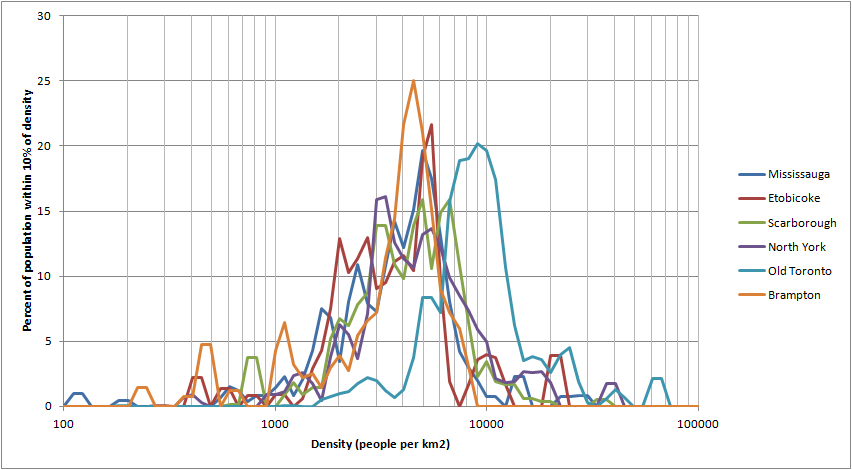M II A II R II K
Senior Member
The less denser parts including the 905 is what you see from Lawrence and on up with a lack of townhomes going up in already existing areas.
memph: Interesting but, um, what the hell does a population-weighted average population density mean? (Do the math. If all the people in the city lived on one street, it might be meaningful I guess.)
Because the townhomes at Bayview are of a different quality than those built in other areas of the suburbs. Thats the problem. People have seen cheap looking townhomes with poor quality.very nice ones being built at bayview and sheppard as well as avenue road. the problem is a mind set. for many years torontonians believed detached houses with a car or two in the driveway was the measuring stick of success. buildings were looked at as for the poor people who couldnt afford their own houses. townhomes were for people who could not afford detached property. and again transit was mainly for poor people who ciuldnt afford a car. i do think things are changing. the younger generation wants to be less car dependant and live more central. hopefully this push will cause zoning to change to fit everyone in. one could only hope.
A population-weighted density is the density that people experience on average -- see this post for an explanation.
Fair enough, but a population distribution graph doesn't paint a particularly different picture.Which is of no relevance to transit planning. You want a measure of dispersion in density of population by census tract. Population-weighted population density is (approximately) the second raw moment of the distribution. That's not a measure of dispersion because it is not a central moment. It overweights high-population places by construction. A better measure of dispersion in this case is the percentage of tracts with population density over a given threshold ... which is what the transit planners use.

Fair enough, but a population distribution graph doesn't paint a particularly different picture.

The bulk of the population of North York, Scarborough, Etobicoke, Mississauga and Brampton live at pretty similar densities with a little bit of high density in each (except Brampton which has the same moderate density throughout). Old Toronto has a lot more high density... which is not surprising since the weighted density is higher as well. There are a few differences between those 5 suburbs, but all in all, they're pretty similar, as their weighted densities suggest.
I don't know... it sounds like the stop spacing would be quite small. I think using streetcars and buses with signal priority would mostly be able to serve the need for transit within downtown. Many of the densest parts of Old Toronto aren't actually inside downtown but in Parkdale, High Park North, Midtown, around Cosburn. Admittedly we're talking about residential density, not residents+jobs though...There could be a move for some short subway lines and elevated RTs to relieve downtown transit as well as make it a lot easier to zip around downtown.
Like a line that includes stops at Spadina, Harbord, Kensington, Chinatown, St. Patrick, Atrium, Dundas Square, Jarvis, Sherbourne, Regent Park, Cabbage Town, St. Jamestown, and end at Castle Frank.
I don't know... it sounds like the stop spacing would be quite small. I think using streetcars and buses with signal priority would mostly be able to serve the need for transit within downtown. Many of the densest parts of Old Toronto aren't actually inside downtown but in Parkdale, High Park North, Midtown, around Cosburn. Admittedly we're talking about residential density, not residents+jobs though...
Cool picture, thanks. But the logarithmic scale makes the cities look more similar than they really are, doesn't it? You could also plot Lorenz curves of population density.
I had to look very closely before I realized why the old city looked so similar to the old suburbs. If the point was to show how similar they were, it's very misleading visually.





